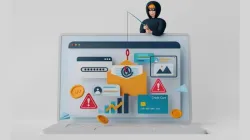5 signs to check to avoid fraudulent websites
Hackers also use websites to trick users into giving away their personal information and data. Here are 5 signs you can check to avoid falling into the trap of fraudulent websites.

Online space is full of scams and scamsters who always try to discover new ways and improve existing methods to defraud their victims. They use every possible meaning available to them including apps, messages, emails, and more.
Hackers also use fraudulent websites to trick users into giving their personal information and data, which is then used for infecting their devices with malware, launching phishing attacks, stealing their identity, and more.
This may sound scary but there are many ways through which you can save yourself from these malicious websites. Here are 5 signs you can check to avoid falling into the trap of fraudulent websites.
5 signs to check to avoid falling into the trap of fraudulent websites
1. HTTP vs HTTPS
Secure Sockets layer is a layer that creates an encrypted link between a web server and a web browser. Before visiting a website, always ensure that it is using ‘https’ instead of ‘http’ and that the web address begins with a small lock.
2. Typos and design issues
Hackers always try to trap people by imitating some legitimate website. However, these fraudulent websites always have some design issues, typos in the website name or URL. Always check if something is off with a site you regularly visit.
3. Pop-ups, exclamation marks, and flash warnings
Hackers always try to create panic among users with pop-ups, flash warnings, and messages with exclamation marks. If you find many pop-ups or warnings on a website, there are high chance that the website is not legitimate.
4. Promotes prizes, coupons, or redirects to a different site
Hackers always try to lure their victims by offering prizes and coupons. Through this, they try to get users to click on their website and then they install malware or trick them into revealing their personal information.
Never click or share any of your personal information on these websites.
5. Unsafe site warning from your browser
If your browser displays a warning that the website you are trying to open is unsafe, then it is probably unsafe. Pay attention to the warning and do not open the website.
ALSO READ: Apple rollouts iOS 17.4.1, iPad 17.4.1 for iPhone, iPad models: Here's what's new
